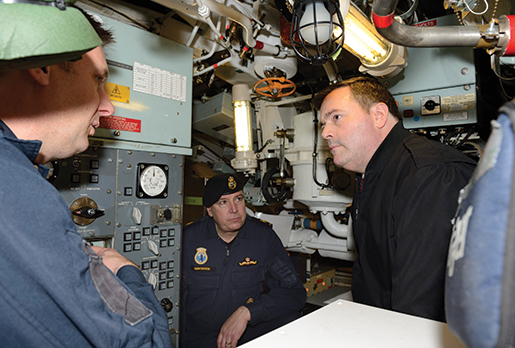New minister needs a new defence strategy

For one thing, defence policy is supposedly still being guided by the Canada First Defence Strategy (CFDS), which was first announced some seven years ago and which is, in many respects, considerably obsolete. To take just one example, it lists one of Canada’s top defence priorities as providing security for the 2010 Vancouver Winter Olympics! Work on a revised CFDS was underway as recently as last spring under a blanket of secrecy, but there is no sign that it will appear any time soon.
The question of how the Royal Canadian Air Force will move ahead to replace the CF-18 fighters that are currently bombing ISIL targets in Syria and Iraq, and showing the flag in Eastern Europe, is still unresolved. The report of a special committee to examine whether the F-35 Joint Strike Fighter should be purchased to replace the CF-18, is still under wraps. It is anyone’s guess whether or not it, too, will see light of day after the next federal election.
Canada also has Special Operations Forces in the Kurdish province of Iraq training peshmerga fighters and probably also acting as forward air controllers for coalition airstrikes against ISIL, but the latter mission has never been confirmed.
The Royal Canadian Navy now consists of fewer than a dozen surface vessels, some of which are undergoing long-term refits, and the task of replacing the Halifax-class frigates and Canada’s lone remaining destroyer with a new class of surface ships is behind schedule. The only bright spot in the naval picture is that all four of Canada’s submarines are now deployable. Some have already carried out missions.
Canada’s new minister of National Defence, Jason Kenney, is a powerhouse in the Tory hierarchy and his appointment is a sure sign that Prime Minister Stephen Harper believes that Canada needs a robust military. Kenney virtually remade Canadian immigration strategy for the better when he held that portfolio, and he is certainly one of the people that Harper listens to. But the new federal budget won’t give Kenney much to work with if the Conservative government is re-elected. It does provide for some increases in the annual adjustment of the Department of National Defence budget over a 10-year period, but the increases are not scheduled to begin until after the election.
Yet Canada was one of the first nations to step up when a coalition of air forces intervened in the Libyan civil war in 2011. A Canadian officer commanded the coalition air campaign. Canada was quick to commit fighter jets to bolster Eastern Europe when the Crimean crisis broke in the spring of 2014 and to the anti-ISIL air campaign that began at the end of the year.
So how should we read the tea leaves? On one hand, DND has a strong, decisive minister and a slight increase in defence expenditure. On the other hand, the government clearly has no intention of raising defence expenditure as a percentage of GDP to anywhere near the two per cent called for by the North Atlantic Treaty Organization. Still, the government clearly sees military intervention in foreign crises as a tool of Canadian diplomacy even though those interventions are being spearheaded by a shrinking navy, an increasingly obsolete fighter air force and (with the exception of Canada’s special forces) an undertrained army.
This government has a basic choice to make: either continue with its ad hoc approach to defence policy and planning, or find out from Canadians what sort of military they want and are prepared to pay for and then shape public views and government requirements into a coherent defence policy. It is understandable that the government will wait for the outcome of the election before proceeding on a path to revitalization, but if the Conservative government is re-elected, expect the state of Canada’s military to be near the top of the list for action.
Advertisement













